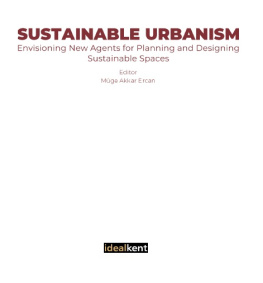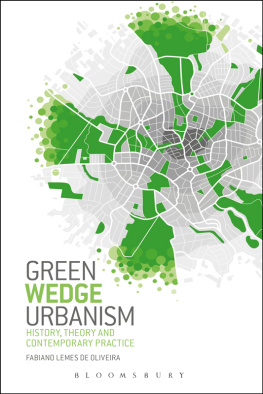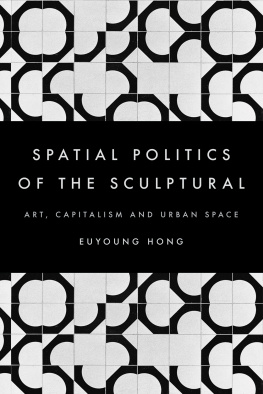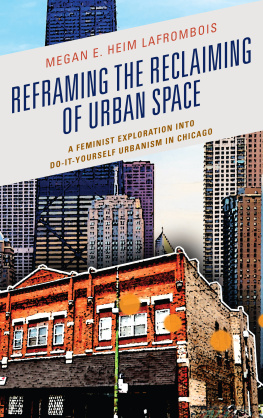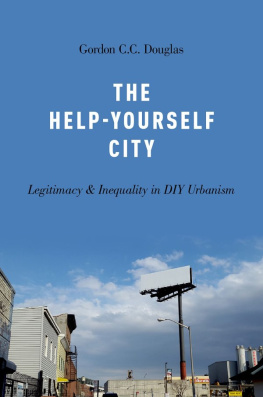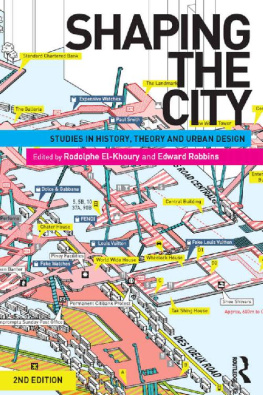Hypersexual City
Much of feminist architectural scholarship focuses on the enormous task of instating womens experience of space into spatial praxis. Hypersexual City: The Provocation of Soft-Core Urbanism suggests this attention to womens invisibility in sociocultural space has overlooked the complex ways in which women already occupy space, albeit mostly as an image or object to be consumed, even purchased.
It examines the occupation of urban space through the mediated representation of womens hypersexualized bodies. A complex transaction proliferates in the commercial urban space of cities; this book seeks to address the cause and consequence of the increasing dominance of gendered representation.
It uses architectural case studies and analysis to make visible the sexual politics of architecture and urbanism and, in doing so, reveal the ways that heterosexist culture shapes the spaces, behaviour and relationships formed in neoliberal cities. Hypersexual City announces how examining urbanism that operates through, and is framed by, sexual culture can demonstrate that architecture does not merely find itself adrift in the hypersexualized landscape of contemporary cities, but is actively producing and contributing to the sexual regulation of urban life.
Nicole Kalms is a Senior Lecturer in the Department of Architecture at Monash University in Melbourne, Australia. Nicole is the founding Director of Monash Universitys XYX Laboratory based in the Faculty of Art, Design and Architecture. In this role, Nicole leads a team of interdisciplinary researchers examining the complex interaction of space, gender and communication in cities.
Hypersexual City
The Provocation of Soft-Core Urbanism
Nicole Kalms
First published 2017
by Routledge
2 Park Square, Milton Park, Abingdon, Oxon OX14 4RN
and by Routledge
711 Third Avenue, New York, NY 10017
Routledge is an imprint of the Taylor & Francis Group, an informa business
2017 Nicole Kalms
The right of Nicole Kalms to be identified as author of this work has been asserted by her in accordance with sections 77 and 78 of the Copyright, Designs and Patents Act 1988.
All rights reserved. No part of this book may be reprinted or reproduced or utilised in any form or by any electronic, mechanical, or other means, now known or hereafter invented, including photocopying and recording, or in any information storage or retrieval system, without permission in writing from the publishers.
Trademark notice : Product or corporate names may be trademarks or registered trademarks, and are used only for identification and explanation without intent to infringe.
British Library Cataloguing in Publication Data
A catalogue record for this book is available from the British Library
Library of Congress Cataloging in Publication Data
Names: Kalms, Nicole, author.
Title: Hypersexual city : the provocation of soft-core urbanism /
Nicole Kalms.
Description: New York : Routledge, 2017. | Based on the authors
thesis (doctoralMonash University, 2015). | Includes bibliographical
references and index.
Identifiers: LCCN 2016045675| ISBN 9781472475725 (hardback :
alk. paper) | ISBN 9781315556987 (ebook)
Subjects: LCSH: Architecture and women. | Architecture
Psychological aspects. | Sex role. | Cities and townsSocial aspects.
Classification: LCC NA2543.W65 K35 2017 | DDC 720.1/03dc23
LC record available at https://lccn.loc.gov/2016045675
ISBN: 9781472475725 (hbk)
ISBN: 9781315556987 (ebk)
Typeset in Sabon
by Saxon Graphics Ltd, Derby
Contents
The title of this book, Hypersexual City , implies a range of possible explorations for the research that follows. Certainly the statement hypersexual city infers a relationship between the two elements that of hypersexuality and that of the city. The hyper prefix suggests a moment of excess, where visual modes of sexual expression are amplified. Thus the alignment of hypersexuality with the city signals a reconceptualization of both terms that has important implications for structuring and shaping sociocultural space.
A guide to the argument developed in this book is revealed in the subtitle The Provocation of Soft-Core Urbanism. To explore the hypersexual city through the notion of provocation is important because it predicts for the reader a complex and, at times, unresolved territory with which the research engages. Various spaces and positions are enlisted placing urban policy and media space alongside an array of feminist positions and discourses on architectural representation to reveal how the occupation of these sites is contested and politicized.
The term soft-core is used in the fullness of its pop-cultural meaning and alludes to the book's context within pornographic culture. While hardcore is understood in pornographic circles as a transgressive practice, the presence of hardcore has normalized the soft-core qualities that now occupy many parts of urban life.
Indeed, leisured society in neoliberal cities has been engaged with the codes and conventions of the pornographic since the mid-1990s. Feminism, too, is asking challenging questions from its many sites and with a diversity of rich and important agendas.
What is certainly clear is that soft-core implies penetration, genitalia or sexual acts (as opposed to the actuality of these events and things) and it has made a leap into urban life as a legitimate urban typology. Positioning soft-core as either pastiche or satire does not fully explore the infiltration of urban life by hypersexuality. Unravelling the significant effects of hypersexuality on spatial practice and our experience of urban space is the precise objective of this book. What follows is how the city takes up hypersexual culture, but also how spatial practitioners have begun to borrow, exploit and critique sexualized communication in urban space. For the moment, the urban experience of hypersexuality is one characterized by objectification and sexism, and this research argues that action and response is required from spatial practitioners and that hypersexual space concerns all of us.
Notes
David Andrews suggest that soft-core's Golden Age was from 1959 when the film The Immortal Mr. Tea's was released, to 1972, when Deep Throat changed the pornographic genre. Convention and Ideology in the Contemporary Softcore Feature: The Sexual Architecture of House of Love, Journal of Popular Culture , 34, no. 1 (2004): 533.
Andrews, Convention and Ideology, 7.
Ibid.
Brian McNair. Striptease Culture: Sex, Media and the Democratisation of Desire (London: Routledge, 2002), 12.
(Italics in original source.) McNair, Striptease Culture , 61; also, Feona Attwood discusses the complexity of these positions in Sexed Up: Theorizing the Sexualization of Culture, Sexualities 9, no. 1 (2006): 8184.
References
Andrews, David. Convention and Ideology in the Contemporary Softcore Feature: the Sexual Architecture of House of Love, Journal of Popular Culture , 38, no. 1 (2004): 533.
Attwood, Feona. Sexed Up: Theorizing the Sexualization of Culture, Sexualities 9, no. 1 (2006): 8184.
McNair, Brian. Striptease Culture: Sex, Media and the Democratisation of Desire . London: Routledge, 2002.


